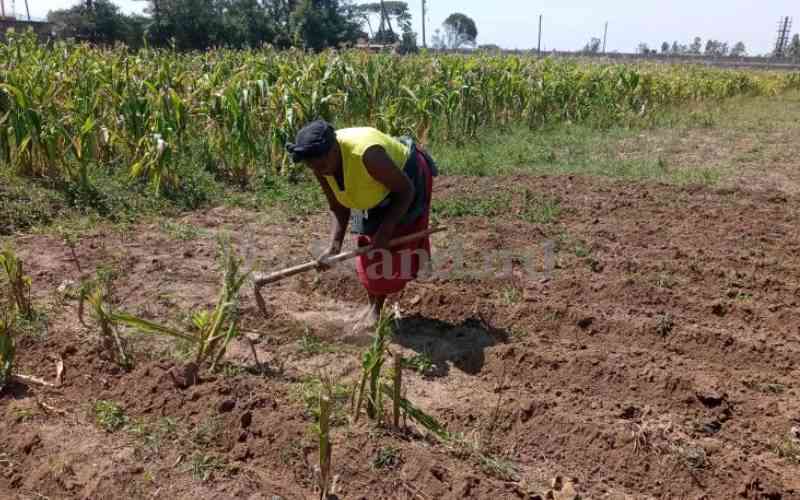
Inadequate agro-processing has been blamed for shrinking earnings by Kenyan farmers.
A new study by Financial Sector Deepening Kenya (FSD) says the sub-sector is too focused on primary processing and does not use local inputs sufficiently.
"This means that Kenya is not only 'leaving money on the table' but is also not creating enough opportunities for earnings to trickle down to local producers," notes the study contained in FSD's August 2022 Agriculture and Processing Landscape Report.
The report observes that only about 20 per cent of Kenya's food exports are processed, which is dismal compared with other countries on the continent.
The report compares the value of Kenya's agro-exports per capita against Ivory Coast, Ghana, South Africa, Nigeria, Tanzania, Uganda and Ethiopia. The per capita values are based on 2013 figures in which Ivory Coast, Ghana, and South Africa are listed above Kenya's.
In 2020, the report shows, the share of Kenya's processed agricultural goods vis-a-vis primary value produce stood at Sh56 billion against Sh208 billion. The percentage of processed food was 21 per cent.
In 2019, the figure was 22 per cent, representing Sh50 billion. This is compared with 18 per cent in 2018 (Sh46 billion), 17 per cent in 2017 (Sh44 billion) and 18 per cent in 2016 (Sh41 billion). The report notes that agro-processing is growing at a moderate pace of five per cent per annum. "Kenya lags behind several other African countries in the strength of its agro-processing industry," the report adds.
The report further notes that most agro-processing in the country is at the primary level, while a big portion of secondary processing does not use local ingredients. There are three levels of processing: primary, secondary and tertiary.
Primary processing starts with raw agricultural products like raw milk. Secondary processing, on the other hand, uses ingredients produced through primary processing, while tertiary processing further transforms the product such that the original raw ingredient is not easily recognisable.
For example, yoghurt or cheese is a product of tertiary processing of fresh milk. A key challenge that has left Kenya handicapped in the agriculture sub-sector is the lack of enough players.
A majority of players are small-scale and lack the financial muscle to carry out secondary or tertiary processing on such products as maize, milk, and fruit juices.
Farmers also do not get value for their produce because of cheap imports and are unable to access markets due to poor infrastructure.
There is also the habit of side-selling in most value chains, which, in turn, disincentivises some agribusiness intermediaries from investing back in the value chain.
For the ecosystem, the report identifies cheap imports of processed goods as one of the challenges. "All but a few value chains can compete such as meat (sausages, chicken) and flour products; but many cannot - for example, tilapia from China, mango pulp from India, tomato paste from Egypt," it reads.
There is also poor infrastructure (road quality, electricity access), which further ramps up costs and lack of availability of backup services for equipment.
 The Standard Group Plc is a multi-media organization with investments in media platforms spanning newspaper print
operations, television, radio broadcasting, digital and online services. The Standard Group is recognized as a
leading multi-media house in Kenya with a key influence in matters of national and international interest.
The Standard Group Plc is a multi-media organization with investments in media platforms spanning newspaper print
operations, television, radio broadcasting, digital and online services. The Standard Group is recognized as a
leading multi-media house in Kenya with a key influence in matters of national and international interest.










